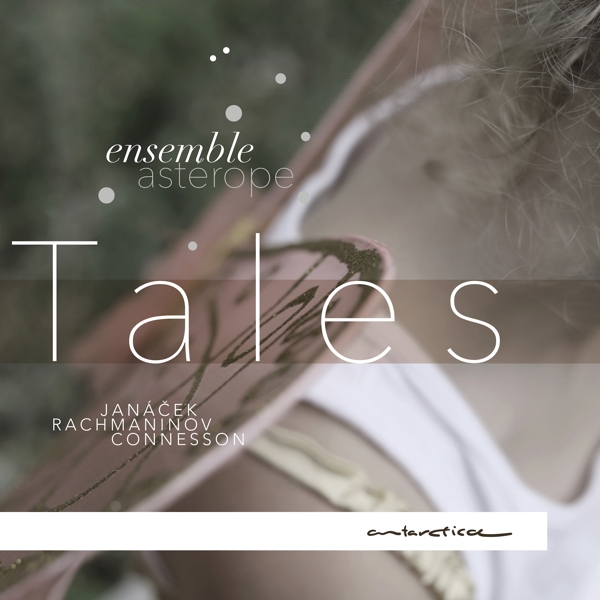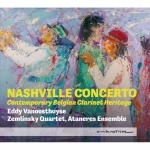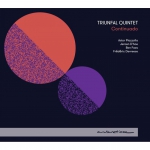Your search:
No selection
Filter results:
|
 |
| Details / Tracklist: |
1. LES CHANTS DE L AGARTHA - I. SOUS LE DESERT DE MONGOLIE
2. LES CHANTS DE L AGARTHA - II. LA BIBLIOTHEQUE DES SAVOIRS PE
3. LES CHANTS DE L AGARTHA - III. DANSE DEVANT LE ROI DU MONDE
4. SONATA FOR CELLO AND PIANO IN G MINOR OP. 19 - I. LARGO - AL
5. SONATA FOR CELLO AND PIANO IN G MINOR OP. 19 - II. ALLEGRO S
6. SONATA FOR CELLO AND PIANO IN G MINOR OP. 19 - III. ANDANTE
7. SONATA FOR CELLO AND PIANO IN G MINOR OP. 19 - IV. ALLEGRO M
8. POHADKA - I. CON MOTO - ANDANTE
9. POHADKA - II. CON MOTO - ADAGIO
10. POHADKA - III. ALLEGRO |
 | | Number of discs: |
1 |
 | | Extra-Infos: |
Works By Connesson/ Rachmaninov/ Janacek |
 | | Description: | Sergej Rachmaninow, LeoÅ¡ JanáÄek und Guillaume Connesson sind drei bemerkenswerte Komponisten, die allem Anschein nach sehr unterschiedlich sind. Dennoch schrieben sie alle in ihren Kompositionen für Cello und Klavier wortgewaltige und ausdrucksstarke Stücke, die ein und dasselbe bewirken. Sie erzählen unverwechselbare und doch ausdrucksstarke Geschichten, die uns fast sofort verwirren und unsere Phantasie anregen.
Auch wenn Rachmaninoffs Stück sehr umfangreich ist, sollten wir beachten, dass JanáÄeks Pohádka auf einem epischen russischen Gedicht basiert und dass Connessons "Les Chants de l'Agartha" wiederum von mythologischen Erzählungen inspiriert wurde. Es ist recht amüsant festzustellen, dass alle drei Stücke mit einer Art "Tanz für einen König" enden, sei es ein Zar, ein König der Welt oder ein kräftiger Pianist und sein kantiler Cellofreund.
Es gibt eine ganze Reihe von Dreiecksbeziehungen zwischen den Stücken, aber insgesamt fällt auf, dass sowohl Connessons als auch JanáÄeks Werke eher spezifische "scènes" darstellen als eine übergreifende Geschichte zu erzählen. Es ist ein schnelles Erzählen auf eine unterhaltsame, aber flieÃ?ende Art.
Selbst Rachmaninoffs vier aufwändigere Sätze sind für sich genommen kleine Juwelen. Es ist wenig überraschend, dass der dritte Satz der Sonate oft separat oder als Zugabe gespielt wird.
Aus musikalischer Sicht ist das Klavier in allen drei Stücken nicht nur eine Begleitung oder ein unterstützender Führer, sondern ein echter Mitstreiter (oder Partner in Crime, wie man will).
Die Rolle des Pianisten ist der des Cellisten durchaus ebenbürtig. An vielen wichtigen Wendepunkten sorgt er für die richtige Stimmung, das richtige Ambiente und führt häufig ein musikalisches Thema ein. Dieser letzte Aspekt ist besonders in der Rachmaninoff-Sonate zu hören.
Emmanuel und Damien agieren wie zwei Erzähler, die die Kammermusik mit viel Zuneigung vortragen. Letztendlich erfordert solch herausragende Musik ein Duo auf Augenhöhe, das nach einem Gleichgewicht zwischen den entsprechenden Linien sucht, um eine aufrichtige Interpretation zu schaffen. Im Verlauf dieser reizvollen Aufnahme ist ihnen das gelungen.
Man kann diese CD als eine Ansammlung von phantasievollen Geschichten genieÃ?en, die mit groÃ?er Hingabe erzählt werden. - WORKS BY CONNESSON/RACHMANINOV/JANACEKSergei Rachmaninoff, Leos Janácek and Guillaume Connesson are seemingly very different. Nevertheless, in their compositions for cello and piano, they all wrote eloquent and articulate pieces that manage to do one and the same thing. They tell distinctive yet expressive stories which, almost immediately, bewilder us and trigger our imagination. Even though Rachmaninoff's piece is sizable, we should note that Janácek's Pohádka is based on an epic Russian poem and that Connesson's "Les Chants de l'Agartha" in turn drew inspiration from mythological tales. It's quite amusing to realize that all three pieces end with a sort of "dance for a king", whether it be a Tsar, a King of the World or a forceful pianist and his cantillate cello friend. There are quite a few triangular relations between the pieces but overall, what strikes us is that both Connesson's and Janácek's works portray specific "scènes" rather than telling an overarching story. It is swift storytelling in a fun but flowing way. Even Rachmaninoff's four more elaborate movements are little gems on their own. It's little surprise that the sonata's third movement is often performed separately or as an encore. From a musical perspective the piano in all three pieces is not merely an accompaniment or a supporting guide but a true brother in arms (or partner in crime, as you please).The role of the pianist is very much equal to that of the cellist. At many important turning points it sets the right mood, the precise ambiance, and frequently introduces a musical theme. This last aspect is especially noticeable in the Rachmaninoff sonata. Emmanuel and Damien act as two narrators performing chamber music with a great deal of affection. At the end of the day such outstanding music requires a duo of equals searching for balance between the corresponding lines, to create a sincere interpretation. |  | | Manufacturer No.: |
AR28 |
 | Product Safety
Responsible Person for the EU:
Antarctica
Motor Music BV
Kannunik De Deckerstraat 22-24, 2800 Mechelen, BE
info@motormusic.eu |  |
|
There are currently no product reviews.
|  |
|
|
 |
|



















